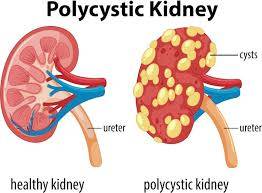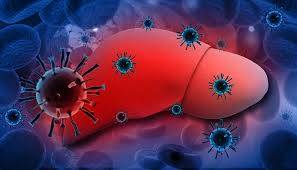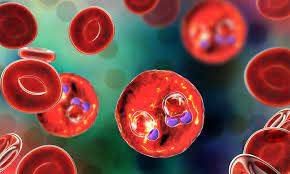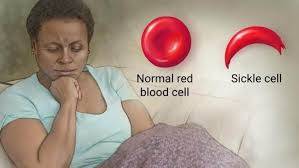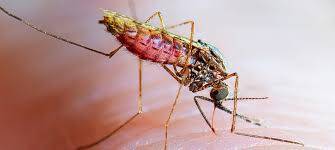Polycystic Kidney Disease: Causes, Symptoms, Diagnosis, Treatment, and Management
**Introduction:**
Polycystic Kidney Disease (PKD) is a genetic disorder characterized by the growth of numerous cysts filled with fluid in the kidneys. These cysts can gradually replace much of the mass of the kidneys, reducing kidney function and leading to kidney failure. PKD is one of the most common inherited disorders, affecting millions of people worldwide. This article aims to provide a comprehensive overview of PKD, including its causes, symptoms, diagnosis, treatment options, and management strategies.

**1. Understanding Polycystic Kidney Disease:**
Polycystic Kidney Disease is broadly categorized into two types: Autosomal Dominant Polycystic Kidney Disease (ADPKD) and Autosomal Recessive Polycystic Kidney Disease (ARPKD).
- ADPKD: This is the most common type, affecting about 90% of people with PKD. It usually manifests in adulthood and is caused by a mutation in either the PKD1 or PKD2 gene, leading to the formation of cysts in the kidneys.
- ARPKD: This type is rarer and more severe, usually presenting in infancy or childhood. ARPKD is caused by mutations in the PKHD1 gene and can also affect other organs besides the kidneys.
**2. Causes and Risk Factors:**
The primary cause of PKD is genetic mutations that are inherited from one or both parents. In ADPKD, a child has a 50% chance of inheriting the mutated gene if one parent carries it. ARPKD follows an autosomal recessive pattern, requiring both parents to carry the mutated gene for the child to inherit the disorder.
Apart from genetic factors, certain risk factors may exacerbate the progression of PKD, including high blood pressure, smoking, and a history of kidney infections.
**3. Symptoms:**
The symptoms of PKD can vary widely among individuals and may worsen over time. Some common symptoms include:
- Abdominal pain or discomfort
- High blood pressure
- Blood in the urine
- Frequent urination, particularly at night
- Kidney stones
- Fatigue
- Headaches
- Joint pain
- Enlarged abdomen due to swollen kidneys
- Urinary tract infections
**4. Diagnosis:**
Diagnosing PKD typically involves a combination of medical history, physical examination, and various diagnostic tests, including:
- Imaging tests such as ultrasound, MRI, or CT scans to visualize the kidneys and detect the presence of cysts.
- Genetic testing to identify mutations in the PKD genes, particularly in cases where the diagnosis is unclear or to assess the risk of passing the condition to future generations.
- Urine and blood tests to evaluate kidney function and detect abnormalities such as protein or blood in the urine.
**5. Treatment Options:**
While there is currently no cure for PKD, several treatment options are available to manage symptoms, slow the progression of the disease, and reduce complications:
- Medications: Blood pressure medications such as ACE inhibitors or ARBs are commonly prescribed to control hypertension and protect kidney function. Diuretics may also be used to manage fluid retention.
- Pain Management: Over-the-counter or prescription pain medications can help alleviate abdominal or flank pain associated with large cysts.
- Antibiotics: Antibiotics are prescribed to treat urinary tract infections, which are common complications of PKD.
- Lifestyle Changes: Adopting a healthy lifestyle, including a balanced diet low in salt and fat, regular exercise, maintaining a healthy weight, and avoiding smoking, can help slow the progression of PKD and reduce the risk of complications.
**6. Dialysis and Transplantation:**
In cases where PKD progresses to end-stage renal disease (ESRD), dialysis or kidney transplantation may be necessary:
- Dialysis: Hemodialysis or peritoneal dialysis can help perform the functions of the kidneys by removing waste and excess fluids from the blood.
- Transplantation: Kidney transplantation offers the best long-term outcome for individuals with ESRD due to PKD. It involves surgically replacing the diseased kidneys with a healthy kidney from a living or deceased donor.
**7. Management and Support:**
Managing PKD requires ongoing monitoring, medical care, and support to improve quality of life and reduce the risk of complications. Some strategies for managing PKD include:

- Regular follow-up visits with healthcare providers to monitor kidney function, blood pressure, and overall health.
- Engaging in support groups or counseling to connect with others living with PKD and share experiences, advice, and coping strategies.
- Staying informed about PKD research and clinical trials for potential new treatments or interventions.
- Maintaining a positive outlook and adopting stress-reduction techniques such as meditation or yoga to manage emotional well-being.
**Conclusion:**
Polycystic Kidney Disease is a complex genetic disorder that affects millions of people worldwide. While there is currently no cure, early diagnosis, lifestyle modifications, and appropriate medical management can help slow the progression of the disease, manage symptoms, and improve quality of life. Continued research into the underlying mechanisms of PKD and the development of novel treatment strategies offer hope for better outcomes for individuals living with this condition in the future.
 blogpay
blogpay


